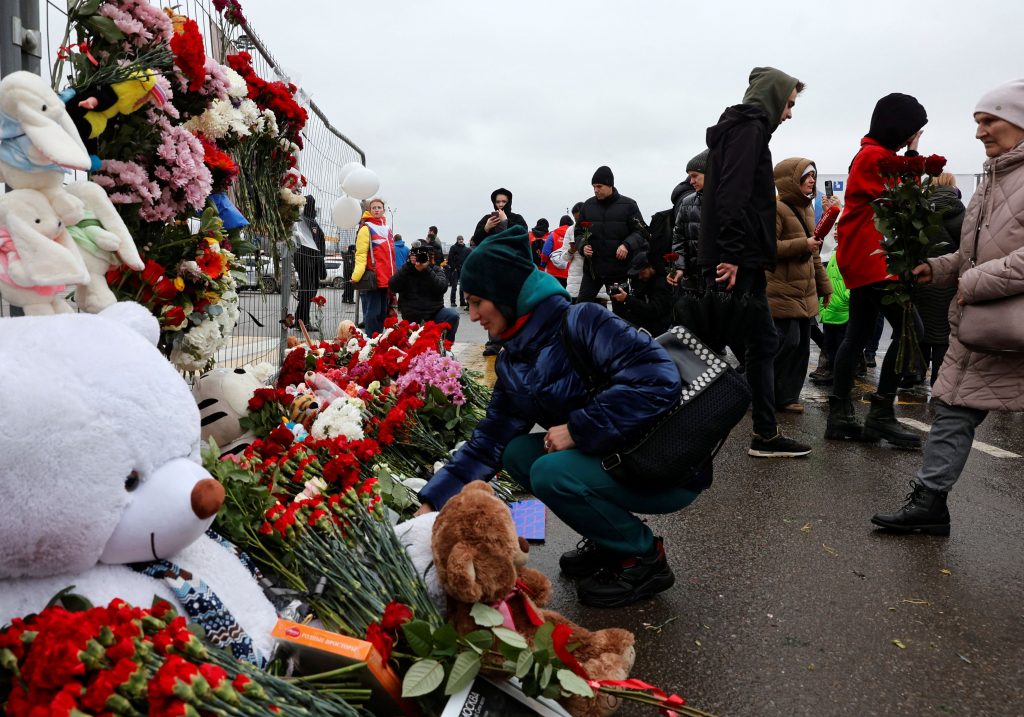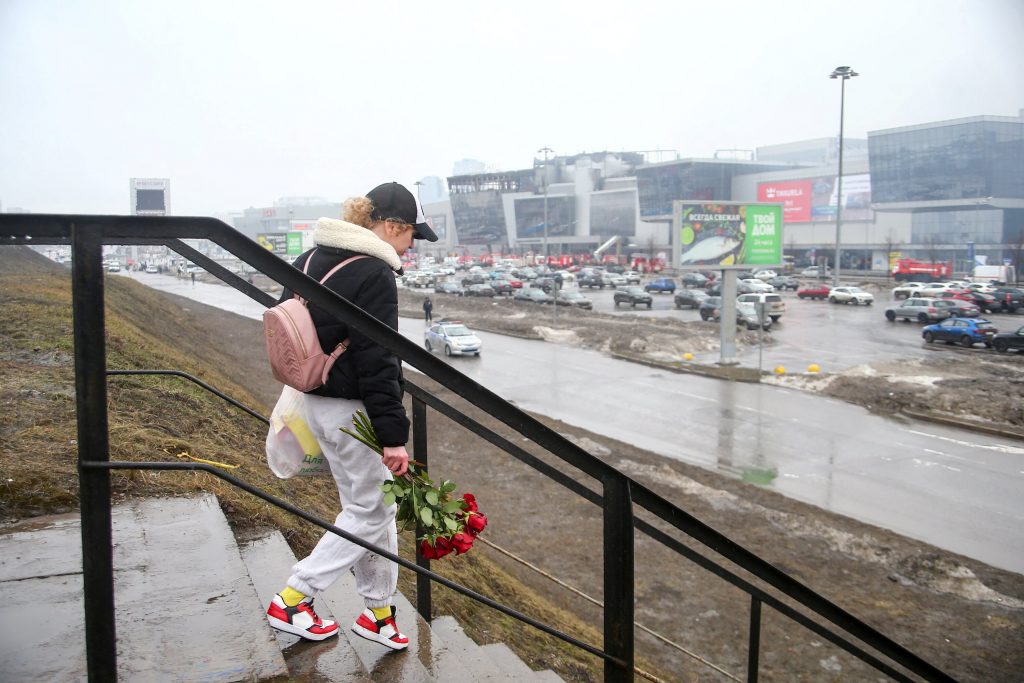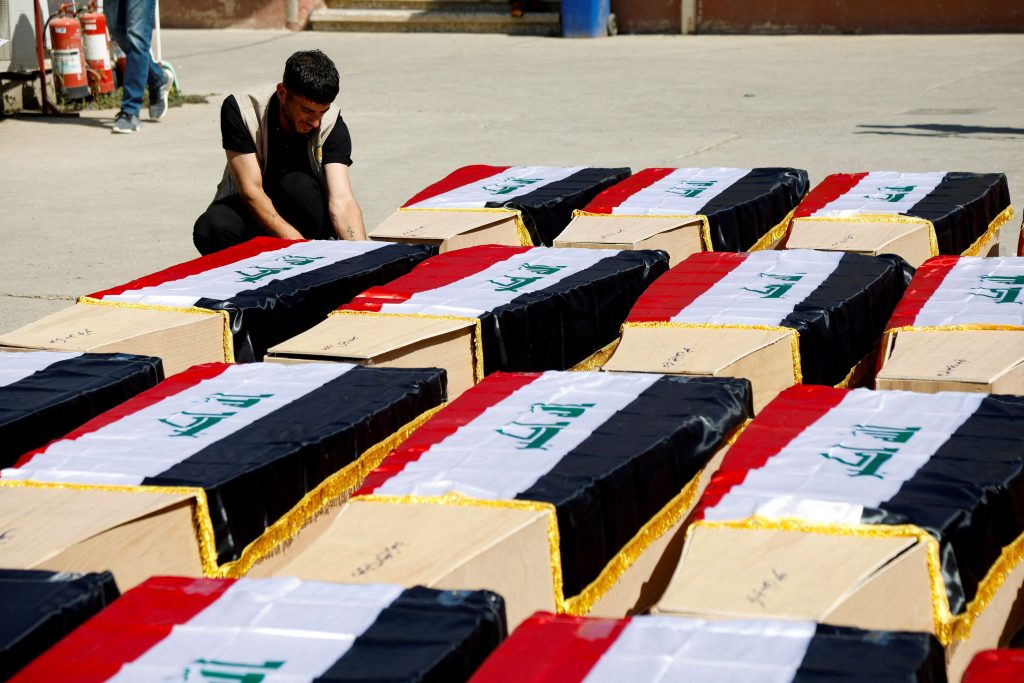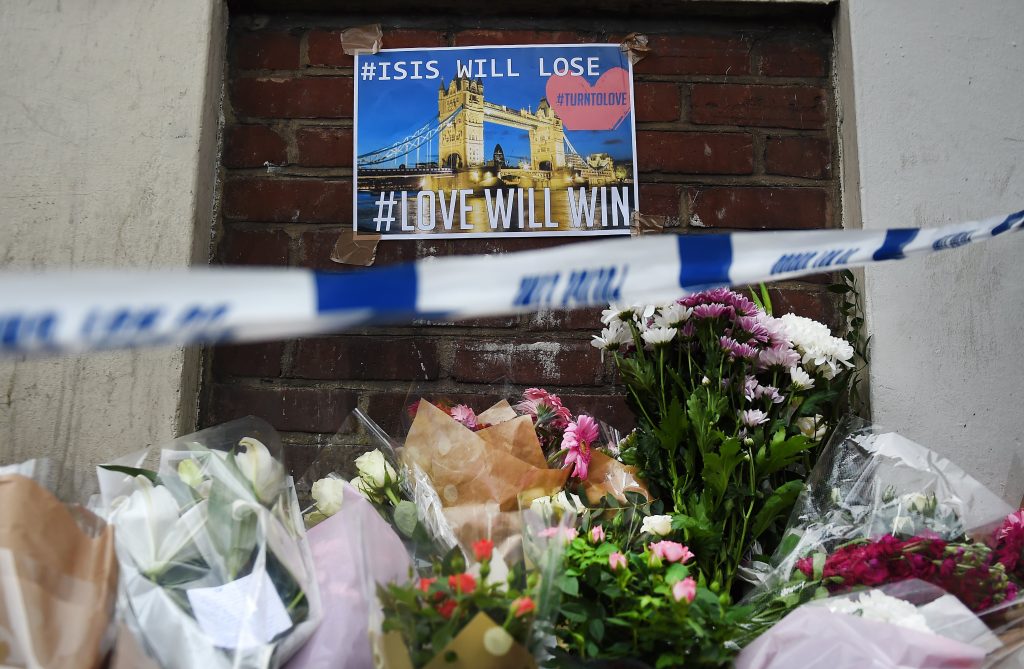DUBAI—The U.S. and its liberal democratic allies may be facing off with authoritarian powers Russia, Iran and China as wars in Ukraine and Gaza inflame global rivalries . But to Islamic State, they’re all enemies of the Muslim faith that should be annihilated.
Friday’s assault on a concert hall outside Moscow that killed at least 133 people, the worst terrorist attack in Russia in decades , drove home that point. Two months ago, Islamic State claimed responsibility for the deadliest strike in Iran in decades, a bombing in the city of Kerman that killed more than 80 people.
Major Islamic State attacks in the West peaked in 2017, though Islamic State militants claimed lethal stabbings and shootings in Belgium, France and Austria since then.
“Great-power competition is alive and well, but it matters not at all to Islamic State,” said Colin Clarke , director of research at the Soufan Group, a consulting firm that focuses on terrorist threats. “While we see big divisions between Beijing, Moscow and Washington, they look at us all as a target. This is a transnational threat.”
Islamic State’s official news outlet, Amaq, claimed the Moscow attack, saying that it is part of a wider “war between the Islamic State and countries fighting Islam.”
The carnage in Moscow, terrorism analysts say, demonstrates the group’s ability to reconstitute itself as a potent global network capable of activating supporters worldwide .
Islamic State’s violence in Russia “tracks with the recent surge in plots foiled throughout the West and its renewed focus on external operations,” said Lucas Webber, co-founder of Militant Wire, an independent outlet that tracks global militancy.
European security agencies prevented several planned Islamic State attacks in recent months, some planned by immigrants from Central Asia, according to officials there.
Russia has long been in the crosshairs of Islamic State. The group took responsibility for the 2015 bombing that killed 224 people aboard a Russian passenger plane leaving Egypt, and in 2022 carried out an attack that killed two Russian diplomats and four Afghans at the Russian Embassy in Kabul.
Islamist grievances against Moscow include the bloody occupation of Afghanistan in the 1980s and the suppression of Chechnya’s autonomy in the initial years of President Vladimir Putin ’s rule.
Even more important, however, is the indispensable support that Russia—together with Iran, a Shiite Islamic Republic—continues providing to President Bashar al-Assad ’s regime in Syria. Russia’s Wagner paramilitary group played a major role in ousting Islamic State from the Syrian city of Palmyra in 2017.
“The reason they are in Russia is because of the Russian role in Syria,” said Rasul Bakhsh Rais, a professor of political science at Lahore University of Management and Science in Pakistan.
While Islamic State didn’t specify which of its branches was behind Friday’s slaughter in Russia, U.S. officials have blamed the organization’s Islamic State-Khorasan Province, or ISIS-K, affiliate.
Khorasan is an ancient Islamic term for the lands that comprise today’s Afghanistan and Central Asian countries that were once part of the Soviet Union.

People lay flowers at a makeshift memorial to the victims of a shooting attack at the Crocus City Hall concert venue in the Moscow Region, Russia, March 23, 2024. REUTERS/Yulia Morozova

A woman carrying flowers walks near the Crocus City Hall concert venue following Friday’s deadly attack, outside Moscow, Russia, March 23, 2024. Sergei Vedyashkin/Moscow News Agency/Handout via REUTERS ATTENTION EDITORS – THIS IMAGE HAS BEEN SUPPLIED BY A THIRD PARTY. MANDATORY CREDIT.
In one of the deadliest atrocities since Islamic State’s self-proclaimed caliphate was dismantled in Syria and Iraq in 2017, ISIS-K carried out the 2021 attack on the Kabul airport that killed 13 U.S. service members and at least 170 Afghans seeking to escape the country.
Russian officials said the four perpetrators of Friday’s slaughter in Moscow appeared to be natives of Tajikistan, the poorest Central Asian state.
Several million guest workers who have moved to Russia from Central Asia, particularly Tajikistan, Uzbekistan and Kyrgyzstan, have long provided a pool of recruits for Islamist militant groups. Many Central Asian fighters captured in Syria and Iraq during Islamic State’s rule there said they had become exposed to radical preachers at construction sites and worker dormitories in Russian cities.
The number of Central Asian workers in Russia has been rising over the past two years because of the manpower shortage caused by the war in Ukraine, where hundreds of thousands of Russian men have been killed or injured, and many more serve as soldiers, often after an involuntary mobilization.
Central Asian migrants often speak little or no Russian, and are vulnerable to abuse. Russian police regularly raid their dormitories and work sites, often pressing them to join the Russian military in Ukraine.
“The attitude of law-enforcement and state organs in Russia toward these migrants definitely contributes somewhat to their radicalization and becoming extremist. It causes a lot of anger,” said Kadyr Toktogulov, a former ambassador of Kyrgyzstan to Washington.
ISIS-K is one of Islamic State’s most significant remaining affiliates, alongside a chapter in West Africa where it holds territory, and where Russian mercenaries play a prominent role in propping up the embattled governments of nations like Mali. ISIS-K’s rise signals the terrorist organization’s move away from its cradle of Syria and Iraq, where it has been thoroughly defeated.
ISIS-K initially emerged in 2015 in eastern Afghanistan, where Osama bin Laden once hid, after insurgents previously affiliated with Afghan and the Pakistani Taliban pledged allegiance to Islamic State’s self-proclaimed caliph, Abu Bakr al-Baghdadi.
Numbering some 2,000 fighters at the time, ISIS-K drew recruits from the disgruntled ranks of the Pakistani Taliban, defectors from the Afghan Taliban and survivors of the battered al Qaeda. It also drew support among extremist Salafis in eastern Afghanistan, Sunni militants from the Islamic Movement of Uzbekistan, and Uyghur militants hailing from the Xinjiang region of China. In 2022, the group took responsibility for gun attacks on the Chinese embassy in Islamabad and on a hotel housing Chinese guests in Kabul.
ISIS-K’s aims were largely local at first. It targeted Afghanistan’s Shiite community, which it considers to be heretics, and the Taliban, which it criticized for engaging in peace talks with the U.S.
As in Iraq, where some of Islamic State’s worst attacks were carried out against Shiites, ISIS-K killed hundreds of people from Afghanistan’s and Pakistan’s Shiite communities, conducting suicide bombings of mosques and schools.
The group also launched multiple attacks against Iran, which for decades has funded Shiite militias throughout the Middle East. Iran recruited among Afghan Shiites to form the Fatemiyoun Brigade, which played a major role in the campaign against Islamic State in Syria and in Iraq.
After the Taliban took power in August 2021, Islamic State’s overarching goal in Afghanistan became to “purify” the country of the new government. Bolstered by Central Asian, Uyghur and Chechen militants who had returned from Syria, ISIS-K has been waging a low-level insurgency, bolstered by resentment among Afghanistan’s ethnic Tajiks and Uzbeks against the Taliban regime, which is almost exclusively Pashtun.
In the wake of the January attack in Iran, Islamic State’s spokesman released a speech via one of its main media outlets, al-Furqan, calling for a worldwide militant campaign against Jews, infidels and what he called Western crusaders. The 34-minute speech titled “Kill Them Wherever You Find Them,” was the most direct call for Muslims to wage the global war issued by the group in years.

A man sits next to coffins containing the remains of people from the Yazidi minority, who were killed in Islamic State attacks in 2014, after they were exhumed from a mass grave, in Mosul, Iraq June 20, 2023. REUTERS/Khalid Al-Mousily/File Photo

An anti ISIS poster seen near Borough Market, in the aftermath of multiple 03 June attacks, London, Britain, 04 June 2017. At least seven members of the public were killed and dozens injured after three attackers on late 03 June plowed a van into pedestrians and later randomly stabbed people on London Bridge and nearby Borough Market. The three attackers wearing fake suicide vests were shot dead by police who are treating the attack as a ‘terrorist incident.’ EPA/ANDY RAIN
Following the January attack in Kerman, Iranian intelligence identified one of the attackers as a 24-year-old Tajikistan national who had received training in camps in the Afghan province of Badakhshan, which borders Tajikistan.
Since 2022, Islamic State has sought to use Moscow’s invasion of Ukraine to recruit members, specifically calling for Chechen Muslims fighting for Russia and Crimean Tatar and Chechen Muslims fighting on the Ukrainian side to not to get involved in the war among “infidels,” and to join Islamic State instead. There is little evidence of that occurring.
“The strategy of the Islamic State is to carry out fewer but more spectacular attacks,” said Riccardo Valle, Islamabad-based research director of the Khorasan Diary, a nonpartisan platform that tracks jihadist groups.
By attracting global attention through major attacks, the group seeks to propagate an image of resilience and strength to potential followers, he said. “Islamic State is able to find the right moment for its attacks, and to patiently wait for the right opportunity.”

People gather and pay tribute to the many people killed and injured in multiple terrorist attacks accross Brussels on 22 March, at Place de la Bourse, in Brussels, Belgium, 24 March 2016. At least 31 people were killed with hundreds injured in terror attacks in Brussels, Belgium on 22 March. Islamic State (IS) has claimed responsibility for the attacks EPA/JULIEN WARNAND
Write to Yaroslav Trofimov at yaroslav.trofimov@wsj.com and Sune Engel Rasmussen at sune.rasmussen@wsj.com


